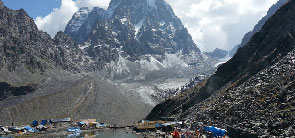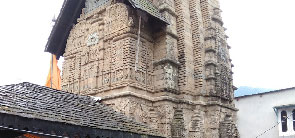
Destinations
Chamba - What to expect
Chamba is the northernmost district of Himachal Pradesh, and lies at the intersection of Dhauladhar and Zanskar ranges. These are facts related to this district, but aren’t particularly interesting. What is interesting is the opening lines of a famous Himachali folk song which go like this - Shimla nahi basna, Kasauli nahi basna, Chamba jana zaroor. When translated, they mean - Don’t settle in Shimla, don’t settle in Kasauli, but certainly visit Chamba. It is only when you spend your holidays in Chamba that you realise the significance of the song. The landscape here is marked by lakes, streams, meadows, alpine tree covers, valleys and rich wildlife. There are historical attractions, and architectural ones. The main town is located on the banks of the River Ravi, and is surrounded by mountains with dense forests. There are numerous opportunities for sightseeing, thanks to its illustrious past. It is the culture of Chamba though, that leaves you fascinated. The rich artistic heritage of the city is reflected in its miniature paintings, temple architecture and the famous ''Chamba Rumal''.
Some hill stations are known for their beauty, others for their heritage and culture. Chamba combines both of these, and in that way, is different from the other famous hill stations in India. Historical records date its origins to the 2nd century BC, when it was inhabited by the Kolian tribes. Since then, it came under the rule of Rajputs, Pratiharas, Sikh army under Maharaja Ranjit Singh, and the British. It finally merged with India on 15th April, 1948. Naturally, all these kingdoms and dynasties left behind their legacy in the form of temples, palaces and other historic structures. Chamba also boasts a rich culture, which is reflected in its music, fairs, festivals, dances and costumes.
If you are in Chamba and want to attend an ongoing event or get a feel of its social life, head towards the Chaugan. It is located right in the middle of the town and is easy to find. Chaugan is a Sanskrit word, and in English means, four sided. It is an enormous grassy area measuring about 800 meters in length and 80 meters in breadth. It was the British who, in 1890, combined five small chaugan into one single chaugan. Today, it is used for a variety of activities, including picnics and cricket matches. The annual Minjar Mela, which is marked by traditional and modern stalls selling local handicrafts, is also held here.
You should certainly visit the temples during your holidays in Chamba. Apart from the spiritual experience which they offer, most of these temples are also historic structures, as they were built a long time back. One of the most famous of these is the Chamunda Devi Temple. It is built entirely of wood and stone, and dates back over 300 years. It is the only temple with a single story in Chamba, as all the others are built in the Nagara style of architecture prevalent in most of North India. The other famous temple is the Laxmi Narayan Temple Complex, which consists of six temples and is a major historical landmark. The main temple, which is dedicated to Lord Vishnu, was built by Raja Sahil Varman. What will catch your attention is the chiselled stone cut walls which are adorned with exquisite designs. Katasan Devi Temple is located in close proximity to Baira Siul Hydroelectric project and overlooks the Chamba Valley.
Another place which you can visit during your trip to Chamba is the Saho village. Located about 18km from from Chamba on the banks of River Sal, it is home to the Chandrashekhar Temple, which is about 1,100 years old. Inside the temple, there is a naturally formed Shiva Lingam. It’s interesting to know that the lingam contains a copper coating which was extracted from the old copper mines of Chamba.
A mythological tale associated with the village states that it was from here that Lord Shiva commenced his journey to Manimahesh Kailash Peak is Bharmour with the intention of settling there. During September, the temple hosts an annual fair where the Bhasmasur Dance is a great attraction. What better way to explore the heritage of Chamba than visit the Bhuri Singh Museum. The museum was set up by Raja Bhuri Singh during his lifetime and houses a rich collection of rare paintings, jewellery, coins, artefacts, musical instruments, armours and traditional arms, besides several other artefacts. You also come across rare copper plate inscriptions and other historical documents.
Your sightseeing tour in Champa should also include a visit to Akhand Chandi Complex. The palace is the largest of its kind in Himachal Pradesh. It is intriguing to know how the materials required for the construction of the palace must have been transported, considering the fact that the nearest railway station was almost 7 to 8 hours away. Even though a part of it has been converted to a government college and there is not much to see inside, the imposing structure itself is a reminder of its glorious past.
Popular Tourist Attractions in Chamba

CHAMUNDA DEVI TEMPLE

LAXMI NARAYAN TEMPLE

CHAMPAVATI TEMPLE

KATASAN DEVI TEMPLE

RANG MAHAL

VAJRESHWARI TEMPLE

MANIMAHESH KAILASH PEAK

CHAMBA CHURCH

SUI MATA TEMPLE

SHRI HARI RAI TEMPLE

AKHAND CHANDI PALACE






